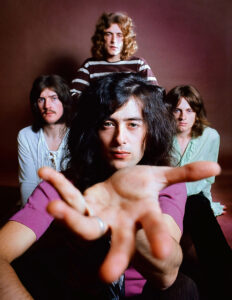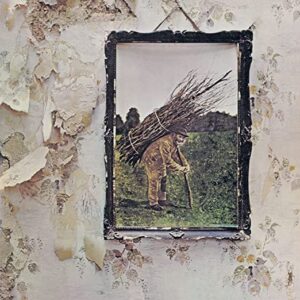

Rock Doc Musical Observation
The album Led Zeppelin IV, was indeed a masterpiece, and not just because of “Stairway.” At this point in their career, Led Zeppelin was collaborated with each other “on a new level” in terms of songwriting, interplay in the studio, adding new instrumental sounds (Page’s guitars and Jones’ array of instruments), and an evolving sense of how to record and utilize the studio setting. On Houses of the Holy, songs such as “The Rain Song,” “The Crunge,” and “The Ocean” were a departure for Led Zeppelin and led them into new musical territory. Even though on their first three albums Zeppelin integrated blues, folk, and hard rocking styles; now they branched out with styles such as reggae, funk, progressive rock, and more jazz influences. They were also musically adventurous in their approach to odd time meters such as 9/8, 15/8 and 5/4. On songs like “Black Dog” they were pioneers with mixed meter phrasing by playing meters that alternated from 4/4 to various odd meters.
For the next three years Led Zeppelin was in its prime. At this point many other hard rock and metal bands had emerged, but Zeppelin had set the standard with their musicianship, sense of mystique, and worldwide popularity!